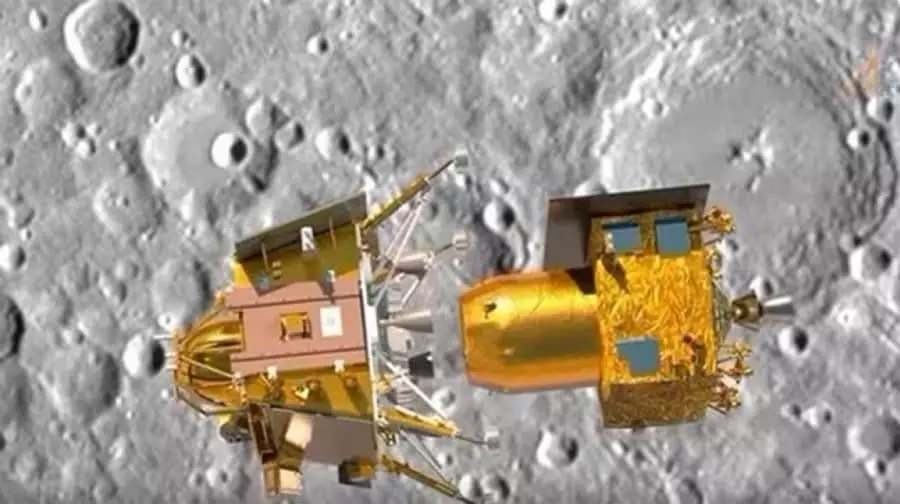
Chandrayaan-3 | All set to initiate Automatic Landing Sequence: ISRO
The lander and rover are scheduled to make a landing near the south polar region of the Moon at the appointed hour which no country has so far achieved.

In a feat not achieved by any country so far, Indian Space Research Organisation (ISRO) on Wednesday (August 23) said it is all set to initiate the Automatic Landing Sequence (ALS) for its ambitious third lunar mission Chandrayaan-3 Lander Module (LM) to land on the lunar surface this evening.
The LM comprising the lander (Vikram) and the rover (Pragyan) is scheduled to make a landing near the south polar region of the Moon at 6:04 pm on Wednesday (August 23), which no country has so far achieved.
“All set to initiate the Automatic Landing Sequence (ALS). Awaiting the arrival of Lander Module (LM) at the designated point, around 17:44 Hrs. IST (5:44 pm),” ISRO said in a post on X. “Upon receiving the ALS command, the LM activates the throttleable engines for powered descent. The mission operations team will keep confirming the sequential execution of commands,” it said.
After checking all the parameters and deciding to land, ISRO will upload the required commands from its Indian Deep Space Network (IDSN) facility at Byalalu near Bengaluru, to the LM, a few hours before the scheduled touchdown time.
According to ISRO officials, for landing, at around 30 km altitude, the lander enters the powered braking phase and begins to use its four thruster engines by “retro firing” them to reach the surface of the moon, by gradually reducing the speed. This is to ensure the lander doesn’t crash, as the Moon's gravity will also be in play.
On reaching an altitude of around 6.8 km, only two engines will be used, while the two others will be shut down, aimed at giving the reverse thrust to the lander as it descends further, they said.
Then, on reaching an altitude of about 150–100 metres, the lander, using its sensors and cameras, would scan the surface to check whether there are any obstacles and then start descending to make a soft landing.
ISRO Chairman S Somanath had recently said the most critical part of the landing will be the process of reducing the velocity of the lander from 30 km height to the final landing, and the ability to reorient the spacecraft from horizontal to vertical direction. “This is the trick we have to play here,” he said.
After the soft landing, the rover will descend from the lander’s belly, onto the Moon's surface, using one of its side panels, which will act as a ramp. On landing, the lander may have to face the challenge of lunar dust due to firing of onboard engines close to the moon's surface.
The lander and rover will have a mission life of one lunar day (about 14 earth days) to study the surroundings there. However, ISRO officials do not rule out the possibility of them coming to life for another lunar day.
(With agency inputs)

